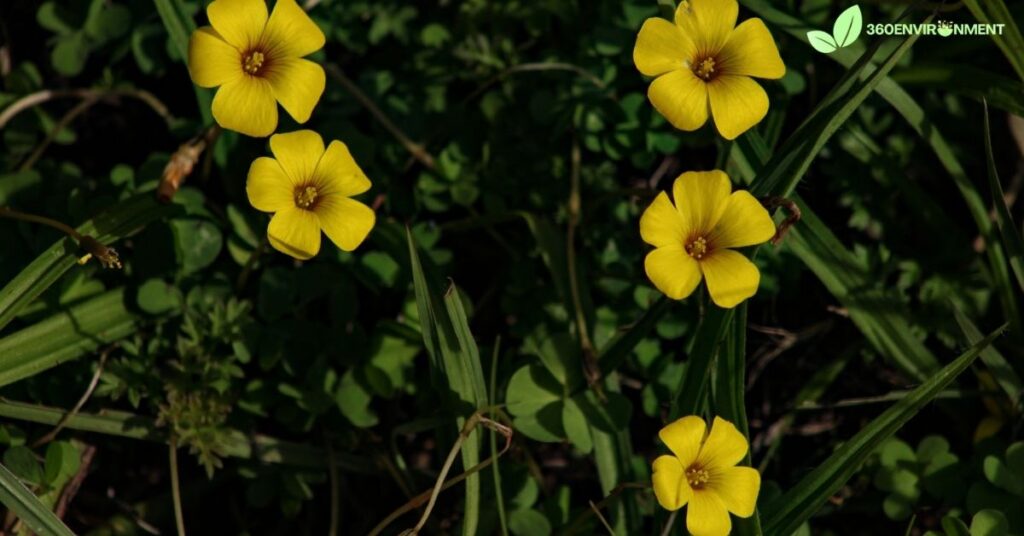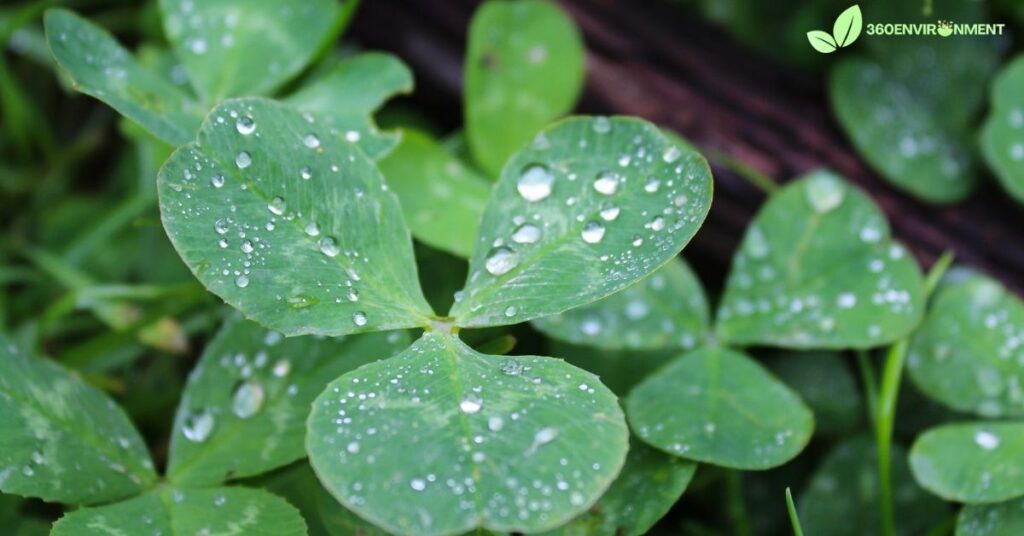Common clover (genus Trifolium), also known as trefoil, is a widely distributed group of plants found across temperate regions of the world. Best known for its distinctive three-lobed leaves, common clover is not only a key component of many grasslands and pastures but also serves as an important plant in agriculture, biodiversity, and ecosystems. The most well-known species are white clover (Trifolium repens), red clover (Trifolium pratense), and alsike clover (Trifolium hybridum), each of which plays a crucial role in various environmental and agricultural settings.
This article explores the environmental niche of common clover, its growth requirements, habitat preferences, ecological interactions, and the important role it plays in soil health, biodiversity, and sustainable farming practices. By understanding the ecological importance of clover, we can appreciate its value beyond just a forage crop for livestock or a plant often found in lawns.
1. Habitat and Geographic Distribution of Common Clover
Common clover is found across a wide range of temperate regions, thriving in a variety of habitats including meadows, pastures, lawns, roadsides, and open woodlands. The ability of clover to adapt to different environmental conditions is one of the reasons why it has been so successful in various ecosystems.

1.1. Native Range and Global Spread
The various species of Trifolium are native to different parts of Europe, Asia, and North America, but due to human cultivation and natural spread, clover is now found worldwide. As a result of its ease of growth and ability to thrive in many soil types, common clover has become naturalized in regions outside of its native range, making it a common sight in many agricultural and natural ecosystems.
- White Clover: Trifolium repens is native to Europe and western Asia but is now found throughout North America, South America, and New Zealand. It is commonly used as forage in pastures and is known for its ability to fix nitrogen in the soil.
- Red Clover: Trifolium pratense is native to Europe, Asia, and North Africa but has been widely cultivated and naturalized in temperate regions across the globe. It is often used in crop rotations and pasture mixes for its nutrient-enriching properties.
- Alsike Clover: Trifolium hybridum is also native to Europe and has been introduced to North America, where it is used for forage and as a soil-improving crop.
1.2. Habitat Preferences
Common clover thrives in a variety of habitats, but it is particularly well-suited to open areas with plenty of sunlight. It grows in both natural ecosystems and managed landscapes, including grasslands, meadows, lawns, and pastures. Clover’s ability to tolerate different soil types and moisture conditions allows it to flourish in environments ranging from moist lowlands to well-drained upland areas.
- Grasslands and Meadows: In these habitats, clover plays a crucial role as a ground cover species, contributing to soil stabilization and nutrient cycling. Its low-growing habit and ability to fix nitrogen make it a valuable component of mixed-species grasslands, where it provides both food and habitat for a range of herbivores and invertebrates.
- Roadsides and Lawns: Clover is also commonly found along roadsides and in lawns, where its tolerance for compacted soils and frequent mowing makes it a resilient plant. In these environments, it helps reduce soil erosion and provides a source of nectar for pollinators.
2. Growth Requirements and Adaptations of Common Clover
Common clover is known for its resilience and ability to adapt to various environmental conditions. Its growth requirements, such as light, water, and soil nutrients, allow it to establish itself in diverse habitats. Additionally, clover’s biological adaptations enable it to thrive even in challenging environments.

2.1. Light and Shade Tolerance
Clover grows best in full sunlight but can also tolerate partial shade, making it adaptable to a wide range of light conditions. This adaptability allows clover to thrive in both open fields and the understory of more shaded environments, such as open woodlands or parkland areas.
- Full Sun Growth: In full sun, clover exhibits its best growth, producing lush, green foliage and abundant flowers. The high light availability promotes photosynthesis, allowing clover to grow rapidly and form dense ground cover.
- Shade Tolerance: Clover can tolerate some shading, which is why it can be found in areas where taller plants or trees cast partial shade. While its growth may slow in low-light conditions, clover remains competitive due to its ability to capture sunlight efficiently.
2.2. Water and Moisture Needs
Clover is relatively drought-tolerant once established, but it thrives in areas with moderate moisture levels. Adequate water availability is important for the plant during its initial establishment phase, after which it can endure short periods of drought. However, in extremely dry conditions, clover’s growth may be inhibited.
- Moderate Moisture: In areas with regular rainfall or access to irrigation, clover grows vigorously and establishes a dense, spreading root system that helps it survive fluctuating moisture levels.
- Drought Resilience: Although clover prefers moist soils, it has adaptations that allow it to survive dry conditions, such as a deep root system that can access water stored deeper in the soil.
2.3. Soil and Nutrient Preferences
Clover grows best in well-drained soils that are rich in organic matter, but it can tolerate a range of soil types, including clay, loam, and sandy soils. One of the most notable adaptations of clover is its ability to fix nitrogen from the atmosphere through a symbiotic relationship with bacteria, allowing it to thrive in soils that are low in nitrogen.
- Nitrogen Fixation: Clover forms a symbiotic relationship with Rhizobium bacteria, which live in nodules on the plant’s roots. These bacteria convert atmospheric nitrogen into a form that the plant can use, providing a significant advantage in nutrient-poor soils. This ability to fix nitrogen enriches the soil, benefiting not only the clover but also surrounding plants.
- Soil pH Tolerance: Clover prefers slightly acidic to neutral soils, with an optimal pH range of 6.0 to 7.0. However, it is adaptable and can grow in soils with pH levels outside of this range, although growth may be less vigorous.
3. Ecological Interactions and Relationships
Clover is an integral part of many ecosystems, interacting with various organisms and providing essential ecological services. These interactions include relationships with pollinators, herbivores, and soil microorganisms. Clover also plays a key role in nutrient cycling and maintaining soil health, making it a critical component of many ecosystems.

3.1. Pollinators and Insect Interactions
Clover flowers are a vital source of nectar and pollen for a wide range of pollinators, including bees, butterflies, and other insects. The presence of clover in meadows and pastures significantly enhances the diversity and abundance of pollinators, which are essential for the reproduction of many plant species.
- Bees and Bumblebees: Clover is especially important for bees, particularly bumblebees, which are some of the most effective pollinators of clover flowers. Red clover, with its deeper flowers, is primarily pollinated by long-tongued bumblebees, while white clover attracts a variety of bee species.
- Butterflies and Moths: Butterflies and moths also visit clover flowers for nectar. In addition to their role as pollinators, some butterfly species lay their eggs on clover plants, where the larvae feed on the foliage.
3.2. Herbivores and Grazing Animals
Common clover is a valuable forage plant for herbivores, both in wild ecosystems and agricultural settings. Its high nutritional value, including protein and minerals, makes it an excellent food source for livestock, wild ungulates, and smaller herbivores.
- Livestock Forage: Clover is widely used as forage for cattle, sheep, and goats due to its high digestibility and nutritional content. It is often grown in combination with grasses in pastures, providing a balanced diet for grazing animals.
- Wild Herbivores: In natural ecosystems, wild herbivores such as deer, rabbits, and hares feed on clover. The presence of clover in grasslands and meadows supports these animals by providing a reliable and nutritious food source, particularly during the growing season.
3.3. Symbiotic Relationships with Soil Microorganisms
One of the most significant ecological roles of clover is its symbiotic relationship with nitrogen-fixing bacteria in the soil. This relationship not only benefits the clover itself but also improves soil fertility, making it an essential component of sustainable agricultural systems.
- Nitrogen Fixation and Soil Enrichment: The nitrogen-fixing bacteria in clover root nodules convert atmospheric nitrogen into ammonia, which the plant uses for growth. As clover grows and eventually decomposes, the nitrogen stored in its tissues is released into the soil, enriching it and promoting the growth of other plants.
- Soil Structure and Erosion Control: Clover’s dense root system helps improve soil structure by promoting soil aeration and water infiltration. In addition, clover acts as a ground cover, reducing soil erosion by stabilizing the soil and preventing it from being washed away by rain or wind.
4. Clover in Agriculture and Sustainable Farming
Clover plays a crucial role in sustainable agriculture due to its ability to fix nitrogen, improve soil health, and provide forage for livestock. Its use in crop rotations, cover cropping, and pasture management is integral to regenerative agricultural practices that aim to reduce chemical inputs and enhance biodiversity.

4.1. Nitrogen Fixation in Agriculture
One of the primary reasons farmers incorporate clover into their agricultural systems is its ability to fix nitrogen, reducing the need for synthetic nitrogen fertilizers. Nitrogen fixation by clover not only benefits the plant itself but also improves soil fertility for subsequent crops.
- Crop Rotation: Clover is often used in crop rotation systems, where it is grown between periods of cash crops. By planting clover after crops that deplete soil nutrients, farmers can restore soil nitrogen levels naturally, reducing the need for chemical fertilizers and promoting healthier soils.
- Cover Cropping: Clover is also used as a cover crop to protect the soil during fallow periods. When planted as a cover crop, clover prevents soil erosion, improves soil structure, and adds organic matter to the soil when it is turned under.
4.2. Pasture Management
In pasture systems, clover is a valuable component of mixed-species grasslands, where it provides high-quality forage for livestock while improving soil health. Its ability to thrive alongside grasses makes it an ideal species for sustainable pasture management.
- Mixed-Species Pastures: By combining clover with grasses, farmers create diverse pastures that provide a more balanced diet for livestock. The presence of clover improves the nutritional quality of the pasture, while its nitrogen-fixing ability supports the growth of the grasses.
- Grazing and Soil Fertility: As livestock graze on clover, the plant’s nitrogen-fixing ability enhances soil fertility, leading to better pasture productivity over time. This symbiotic relationship between clover, livestock, and soil health is a cornerstone of sustainable grazing systems.
5. Role of Clover in Biodiversity and Ecosystem Health
Beyond its agricultural benefits, clover contributes to biodiversity and ecosystem health in natural and managed environments. Its presence in grasslands, meadows, and pastures supports a wide range of organisms, from pollinators and herbivores to soil microorganisms.

5.1. Supporting Pollinator Populations
As a nectar-rich plant, clover is essential for supporting pollinator populations, particularly bees and butterflies. The decline of pollinators due to habitat loss and pesticide use has raised concerns about food security and biodiversity, making clover an important species for pollinator conservation.
- Pollinator-Friendly Habitat: Clover provides a consistent and abundant source of nectar for pollinators throughout the growing season. By planting clover in meadows, pastures, and urban green spaces, land managers can create pollinator-friendly habitats that help reverse the decline of bee and butterfly populations.
- Biodiversity Enhancement: In addition to supporting pollinators, clover enhances biodiversity by providing habitat and food for a range of other insects, birds, and small mammals. Its presence in ecosystems helps create a more diverse and resilient environment.
5.2. Soil Health and Ecosystem Services
Clover plays a key role in maintaining soil health and providing ecosystem services that benefit both natural and agricultural landscapes. Its nitrogen-fixing ability, soil stabilization properties, and contributions to organic matter make it a valuable plant for ecosystem restoration and conservation.
- Ecosystem Restoration: Clover is often used in ecosystem restoration projects to improve soil fertility and structure. Its ability to fix nitrogen and stabilize soil makes it an ideal species for re-vegetating degraded lands and restoring ecosystems affected by agriculture or development.
- Carbon Sequestration: By adding organic matter to the soil, clover helps sequester carbon, reducing the amount of CO2 in the atmosphere. This makes clover an important plant for climate change mitigation efforts, particularly in sustainable agricultural systems that prioritize soil health.
6. Climate Change and the Future of Clover
As climate change continues to impact ecosystems around the world, clover’s role in agriculture and natural habitats may become even more important. Its resilience to changing environmental conditions, combined with its ability to improve soil health and support biodiversity, positions clover as a key species for adapting to a warming world.

6.1. Adaptation to Changing Climate Conditions
Clover’s adaptability to a range of environmental conditions, including varying temperatures and moisture levels, suggests that it may be able to tolerate some of the challenges posed by climate change. However, extreme weather events such as droughts or flooding could impact its growth and productivity.
- Drought Tolerance: Clover’s deep root system allows it to access water during dry periods, making it relatively drought-tolerant compared to other crops. However, prolonged droughts could still reduce its growth and nitrogen-fixing ability, particularly in regions where water availability is expected to decrease.
- Resilience in Changing Ecosystems: As ecosystems shift in response to climate change, clover’s ability to fix nitrogen and improve soil health may help stabilize ecosystems that are under stress. Its presence in grasslands and pastures could help mitigate some of the negative effects of climate change on biodiversity and soil fertility.
6.2. The Role of Clover in Sustainable Agriculture
In the context of sustainable agriculture, clover’s role is likely to become even more important as farmers seek to reduce their reliance on chemical fertilizers and improve soil health. By incorporating clover into regenerative agricultural practices, farmers can create more resilient systems that are better able to withstand the impacts of climate change.
- Regenerative Agriculture: Clover is a key component of regenerative agricultural systems, which prioritize soil health, biodiversity, and carbon sequestration. By using clover as a cover crop, forage plant, and nitrogen fixer, farmers can enhance the resilience of their farming systems and reduce their environmental impact.
- Agroecological Solutions: As the demand for sustainable and climate-friendly farming practices grows, clover will continue to play a central role in agroecological solutions. Its ability to provide multiple ecosystem services, from nitrogen fixation to pollinator support, makes it a versatile and valuable plant for the future of agriculture.
Conclusion: The Ecological and Agricultural Importance of Common Clover
Common clover is a plant of great ecological and agricultural significance. Its ability to fix nitrogen, support pollinators, improve soil health, and provide high-quality forage makes it an essential component of many ecosystems and farming systems. Whether growing in natural grasslands, managed pastures, or urban green spaces, clover plays a critical role in promoting biodiversity, supporting ecosystem services, and enhancing the resilience of agricultural landscapes.
As we face the challenges of climate change and the need for more sustainable agricultural practices, the environmental niche of common clover will become even more important. By understanding its ecological interactions and contributions to ecosystem health, we can appreciate the value of clover not just as a forage plant, but as a key species for supporting biodiversity, improving soil health, and creating resilient ecosystems for the future.
Read More: Jengibre (Ginger): Understanding Its Role in Ecosystems and Its Ecological Importance

